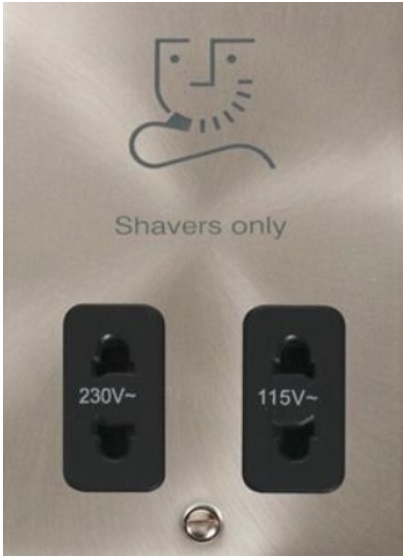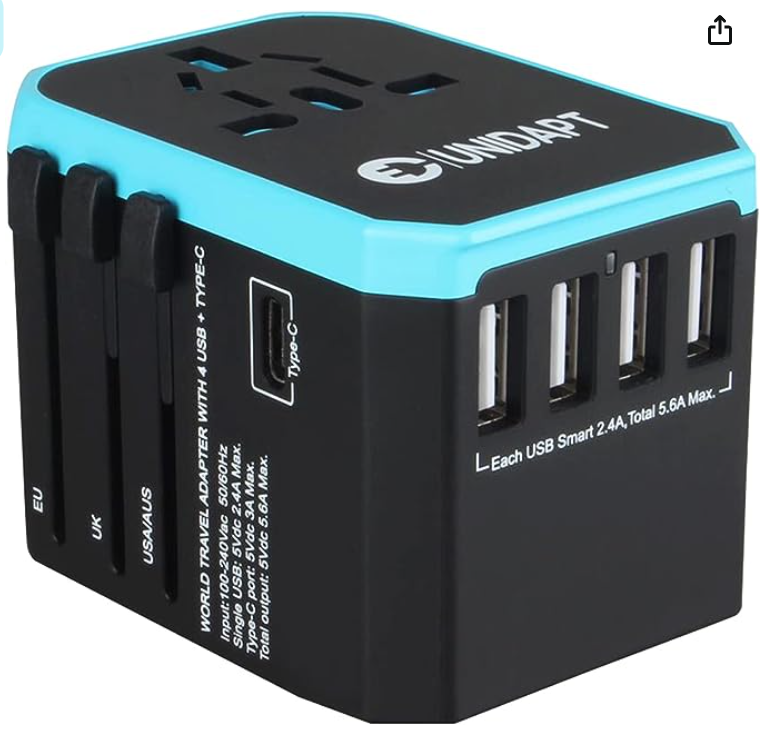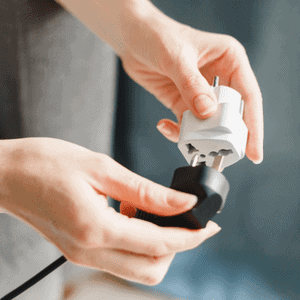Electronics – Adapting to your travel needs
Ah, the modern age of convenience… We all have a handful of electric or electronic devices we just can’t (or don’t want to) live without. Well, the good news for travelers is that most modern small electronics are dual voltage by default – thank goodness for the global marketplace – so you only need an electronic adaptor for the plug rather than a voltage convertor. read on…
But when you’re traveling around the world you’ll find there is no global standard for the electricity supplied to homes and businesses. Various countries primarily use either 120 or 240 volts AC but 110/220 means the same thing since the voltage varies in real-life. 60 hertz* is common with most 120V systems while the majority of 240V systems alternate slightly slower at 50 cycles. Check out this chart if you want to see who does what.
TheMobileRetiree.com is supported by its audience. We may earn a small commission from qualifying purchases made through links on our website. Thank you. Learn more>
So you may find yourself shopping for a converter but what do you actually need ? Well, the good news is that most modern small electronics are dual voltage by default – thank goodness for the global marketplace – so you only need an electronic adaptor for the plug rather than a voltage convertor.
The acceptable voltage range is determined by the manufacturer based on their intended market. If they plan to sell a particular item only in the US market – or never in the US market- then they’ll save the $1.49 additional manufacturing expense and not build in a voltage convertor chip
Three numbers that matter
There are 3 numbers that matter when we’re dealing with electricity:
- Voltage
- Frequency and
- Wattage or amperage.
Wattage is a measurement of how much electricity is being pulled through the wire to power the device – you can think of it like water flowing through pipes if you imagine watts as being like gallons per minute; a small hose can handle a little bit of water but if you need a lot of water then you need a bigger hose or way more pressure.
Amps are determined by dividing the wattage by the voltage (and that’s transitive – voltage multiplied by amps gives you the wattage) so your 3 amp cell phone charger is drawing around 350 watts; your 1750 watt hair dryer is pulling around 15 amps at 110 volts. That’s why the outlet gets warm to the touch if you run it for an extended period – the circuit it’s connected to is probably only rated for 20 amps so you’re pulling almost as much electricity through that outlet as it’s designed to safely handle.
Look at the power supply for your device (the brick or box part for plug-in chargers) and you’ll find a label or engraving somewhere on it that indicates ‘120VAC/60Hz’ or ‘240VAC/50Hz’ or, far more commonly these days “110/220VAC – 50/60Hz” There will also be either a wattage or amperage number – 1500W or 1.5A – that lets you know how much current the device needs.
That set of numbers and your destination informs whether you need an adaptor, a convertor or both. Areas that use 110/60 power also usually use the same type of 2 bladed plug so no adaptor or converter is needed to take your US spec devices to, for example, Panama. 220 volt systems are super random. Your UK spec 220/50 device will be fine in India except the plugs are different.
If you’re curious, here’s a link that shows who uses what plug types
Generally speaking, the more power is required, the bigger the voltage convertor needs to be. Not only does more current require physically larger wires – remember that water hose analogy – but the conversion process generates heat so the convertor needs a larger mass to dissipate the surplus heat. A 1,000 watt convertor will easily handle a laptop and a couple of cellphones but might melt down when you plug in your curling iron
The power supply for my laptop, phone, electric toothbrush and electric razor all indicate they are essentially universal – ‘110/220VAC – 50/60Hz’ or ‘120/240VAC – 50/60Hz’ but my beard trimmer is marked ‘120VAC/60Hz’. So the majority of my electronics will only ever need a plug adaptor to be used anywhere in the world. My beard trimmer will need to be replaced because I have very little interest in buying a voltage convertor just for that one device.
*********************UPDATE July 2024*******************
I decided to carry the beard trimmer with us and use it as long as the battery held out. Since it only gets used for 5 minutes or so, once a week, I thought it would last until we got to Europe and I’d be able to easily source a replacement there.
As it turns out, the battery held up very well and then in England we ran into a thing I had forgotten about –

the hotel bathroom shaver outlet. These outlets include a transformer to reduce the voltage from 230 to 115 allowing people from the Americas to use their electric razors. I was able to put a full charge into it and by the time it needed a boost, we were back in North America.
*********************UPDATE the Second October 2024*******************
That beard trimmer was several years old and the adjustable guard no longer stayed securely in place so I dropped US$19.99 on a new one that is not only universal voltage but also is designed to cut hair. It came with about 11 different length guards and, through trial and error, I have figured out which 3 need to travel with me. The voltage adaptor block is smaller, too, so I’ve saved 3/4 cubic inch of space and easily 8 or 10 grams of weight 😉
************************************
Stay safe with electricity by not overloading circuits or adaptors/convertors and by using the appropriate device to get the job done.
Just because you CAN connect the charger to the outlet with two paperclips and a car key doesn’t make it a good idea. When in doubt, get advice from a qualified electrimagician
*‘Alternating Current’ refers to the fact that the voltage actually ‘pulses’ between zero (ground) and 120 or 240 volts (supply voltage)
If you’re curious here’s the travel adaptors we chose to purchase

This adaptor will convert to virtually any plug type and also has a high current USB-C port that can be used to charge my laptop

